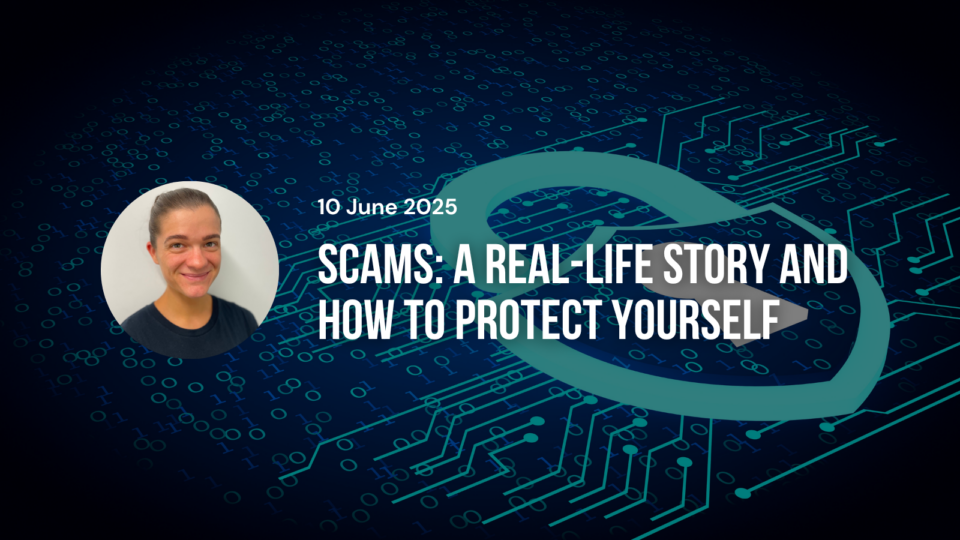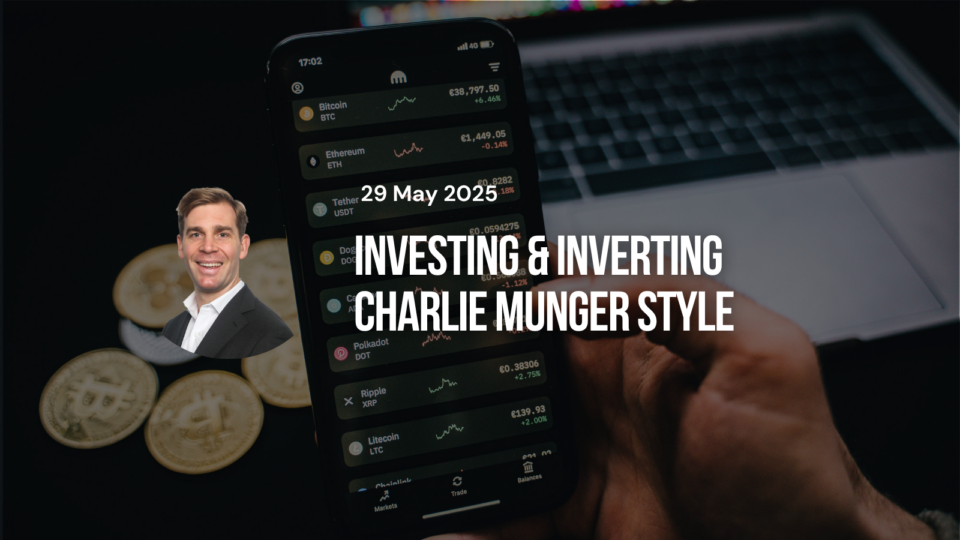

By Leigh Gant, Education Manager
10 June 2022
Compounding is hard because a bad six months is more memorable than a fantastic six years.
One of my favourite investors is Jeremy Grantham. The “acclaimed” British investor and permabear must set his calendar for about the same date every year to roll out his prediction that markets are at the end stage of a massive bubble and that the NASDAQ, S&P 500 and/or global markets will crash.
Grantham is a favourite of mine because he is a clear reminder that market forecasters are eventually correct if they continually predict a market crash over and over again. Yet, in between these infrequent quasi-accuracies are years of incorrect crystal ball gazing where markets have risen despite what someone like Grantham has predicted.
Wondering whether there is going to be a market pullback is an odd proposition – of course stocks will pull back. Since 1928, the S&P 500 has declined 10% or more from a recent high more than 90 times, or about once every 11 months, with just a handful of years not recording a 10% dip. Ten-percent pullbacks are almost as common as summers, yet nobody ponders whether summer will come around again this year.
Eleven to twenty-percent market drops have occurred 30 times since 1928, or about an average every four years. Thirty-percent market drops have occurred about an average every ten years and forty-percent declines happen a few times per lifetime. In Australia the figures are within the same ballpark, albeit a little less volatile in the last 35 years.
Few of us are immune to the emotional delusion that the market won’t crash from time to time and panic when it does. The number of investors who claim to be contrarians outnumber actual contrarians by orders of magnitude.
When you become resigned to the frequency of market crashes (and our tendency to panic when they hit), having an investing practice based on reasonable rules makes way more sense than flying by the seat of your pants and hoping you act rationally when everyone else doesn’t.
Perhaps you can sense where this article is heading: I have received many questions since my previous article about how I am investing now given the recent pull backs, inflation, interest rate changes and macro concerns.My answer might sound trite, but stay with me.
I haven’t changed anything about my investing practice, but that’s not to say I haven’t changed my investing.
I use the term “practice” very deliberately. Yoga is a practice of the mind and body. There are various styles of yoga that combine physical postures, breathing techniques, and meditation or relaxation to promote mental and physical well-being. Those who do yoga understand it is called a practice because the work is never ending. One cannot beat or win yoga, there is no point in time where one finishes yoga. The practice continually evolves along with the yogi.
Investing is the same. There are many styles of investing and the learning never ceases. Thus, an investing practice is a framework that allows you to stay in the game, fosters continuous education and adapts as progress is made.
Forming reasonable rules is a lesson in psychology: being coldly rational is not always realistic. Many believe that success in compounding wealth is all about maths, yet while it does play a powerful role, we all have emotions and that must be factored into decision making.
By building a practice around a set of reasonable rules, we can drive much of the behaviour and attitudes that will impact success or downfall. Here are mine:
Rule #1 Don’t lose money. Rule #2 Don’t forget rule number one.
This infamous Warren Buffett quote means something different to every reader. I define it as avoiding catastrophe and protecting wealth as a priority. Rather than focussing on the potential upside of an investment, look at the risk or downside of a business to assess how it could permanently destroy wealth. This makes saying “no” easy, portfolio allocation and weightings easier to prescribe and reduces any anxiety because I won’t invest in things I don’t understand.
I, of course, have sold investments at below the initial buy price and so has Buffett. It is impossible to have a perfect strike rate. However, thanks to this mindset I am able to consistently do well, have more winners than losers and my portfolio does not keep me awake at night.
“Worship room for error. A gap between what could happen in the future and what you need to happen in the future in order to do well is what gives you endurance, and endurance is what makes compounding magic over time.”
– Morgan Housel
Rule #3 Save like a pessimist, invest like an optimist.
Market crashes in the future look like risk and look like opportunity in hindsight. Knowing that markets frequently crash, it is crucial that investors save for a rainy day. There are going to be opportunities for you to deploy cash but only if you have it sitting and waiting.
Savings without a spending goal gives you options and flexibility, the ability to wait and the opportunity to pounce. It gives you time to think. It lets you change course on your own terms.
Having an emergency fund and an investing emergency means I never have any pressure to sell holdings. All good investing comes down to surviving an inevitable chain of short-term setbacks and disappointments in order to enjoy long-term progress and compounding.
Rule #4 Aim for progress, not perfection.
One of the most challenging hurdles to overcome is the certainty that I will make mistakes, even when following rules and consistently learning. No one is perfect.
To strive for progress , not perfection, means that you should appreciate and be proud of your work. You shouldn’t be focused on what something could or should be; instead, focus on the small steps, the positive ways to improve yourself, and moving forward
Rule #5 Follow an investing system
Drawing from his experience as a general surgeon, Atul Gawande’s The Checklist Manifesto reveals startling evidence on how using a simple checklist can significantly reduce human error in complex professions such as aviation, engineering and medicine.
Evolution has designed our brains to take shortcuts and make hasty decisions. In the wild, when you see a predator, you simply run without thinking, a typical “System 1” decision (automatic, intuitive, with little effort). Investing requires “System 2” thinking which is conscious, logical and requires more effort. A good checklist does not try to spell out everything – a checklist cannot fly a plane. Instead, it provides reminders of the most critical and important steps – the ones that even the highly skilled professional using them could miss. Good checklists are, above all, practical.
What does this look like in reality?
Reiterating from above, my investing practice hasn’t changed at all. I thoroughly enjoy reading and talking about companies. My time is split between researching businesses I’d like to own and reviewing those I already own.
If I find something interesting, I begin analysing the business according to my checklist and placing them on the watchlist if they meet a lot of my checklist criteria. Without going into specifics, the checklist ensures I understand the business, the company has one or more durable competitive advantages, its management is talented and has integrity and, finally, valuation to figure out what the stock price must be for it to be trading at a margin of safety.
This is where perhaps my investing is different than it was two years ago. Some companies that were very attractive in March to May 2020 aren’t so any more. Elements like risky balance sheets, shrinking operating margins and slowing revenue growth are increasingly unattractive in a world of higher inflation and rising interest rates.
However, there are businesses out there that have pricing power and can raise prices with inflation or even beyond inflation; companies that have a really attached customer base who need their product or service regardless of inflation; and, as we know frequently happens, can go “on sale” when the market has one of its semi-regular crashes.
When I’m not researching a business, I love learning about super investors with incredible track records. There is an abundance of investing education to sift through: books, quarterly/annual letters and interviews are easily accessible for any investor who has the time and interest.
If you’re not an investing nerd like me, you may choose to do none of the above and that is totally fine. Your investing practice should be built in a way that resonates with your character and interests. When done well, it will not feel like “work”, rather it will be a joy and help you stay invested for longer which, as we know, is the key to winning this game.
After all, average returns sustained for an above-average period of time leads to extraordinary returns.





